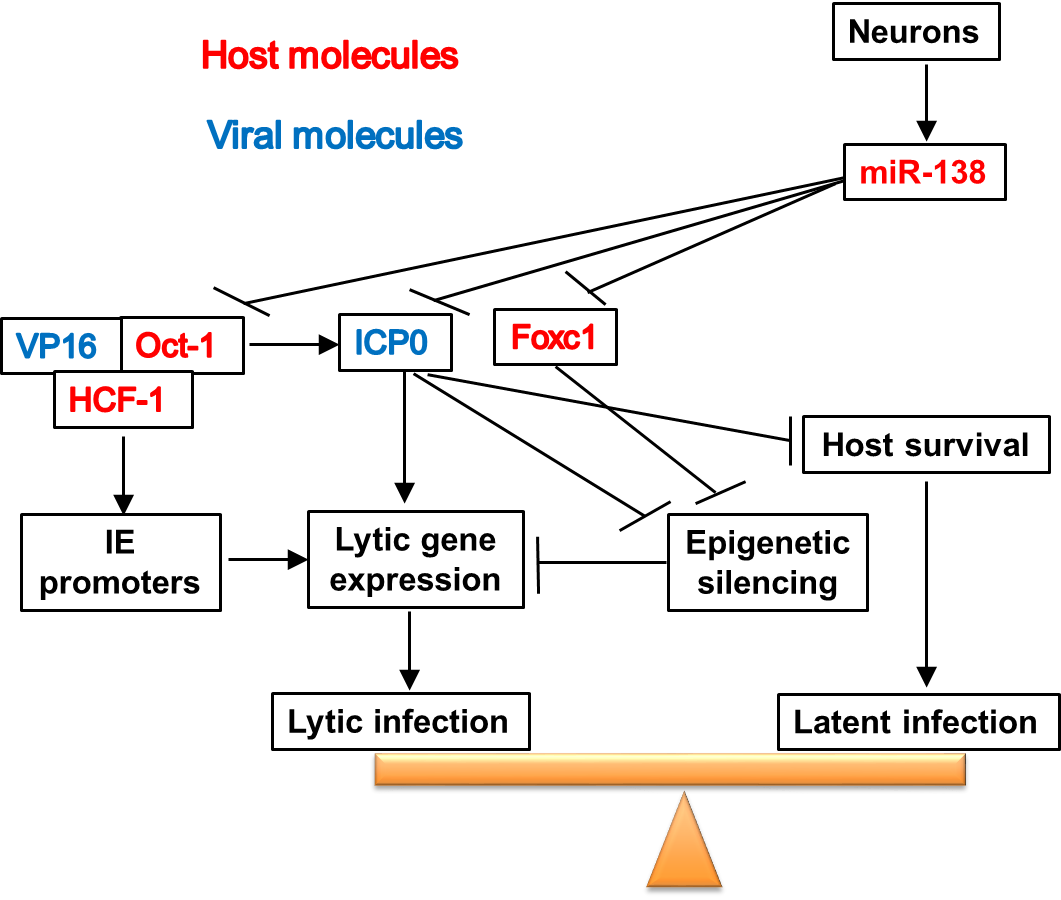Abstract
MicroRNA miR-138, which is highly expressed in neurons, represses herpes simplex virus 1 (HSV-1) lytic cycle genes by targeting viral ICP0 messenger RNA, thereby promoting viral latency in mice. We found that overexpressed miR-138 also represses lytic processes independently of ICP0 in murine and human neuronal cells; therefore, we investigated whether miR-138 has targets besides ICP0. Using genome-wide RNA sequencing/photoactivatable ribonucleoside-enhanced crosslinking and immunoprecipitation followed by short interfering RNA knockdown of candidate targets, we identified the host Oct-1 and Foxc1 messenger mRNAs as miR-138’s targets, whose gene products are transcription factors important for HSV-1 replication in neuronal cells. OCT-1 has a known role in the initiation of HSV transcription. Overexpression of FOXC1, which was not known to affect HSV-1, promoted HSV-1 replication in murine neurons and ganglia. CRISPR–Cas9 knockout of FOXC1 reduced viral replication, lytic gene expression and miR-138 repression in murine neuronal cells. FOXC1 also collaborated with ICP0 to decrease heterochromatin on viral genes and compensated for the defect of an ICP0-null virus. In summary, miR-138 targets ICP0, Oct-1 and Foxc1 to repress HSV-1 lytic cycle genes and promote epigenetic gene silencing, which together enable favourable conditions for latent infection.











